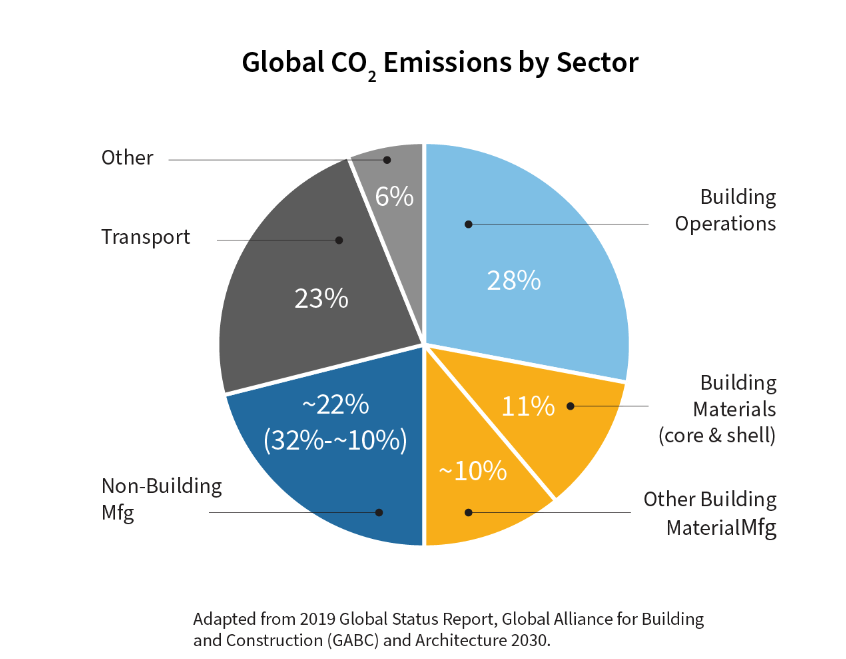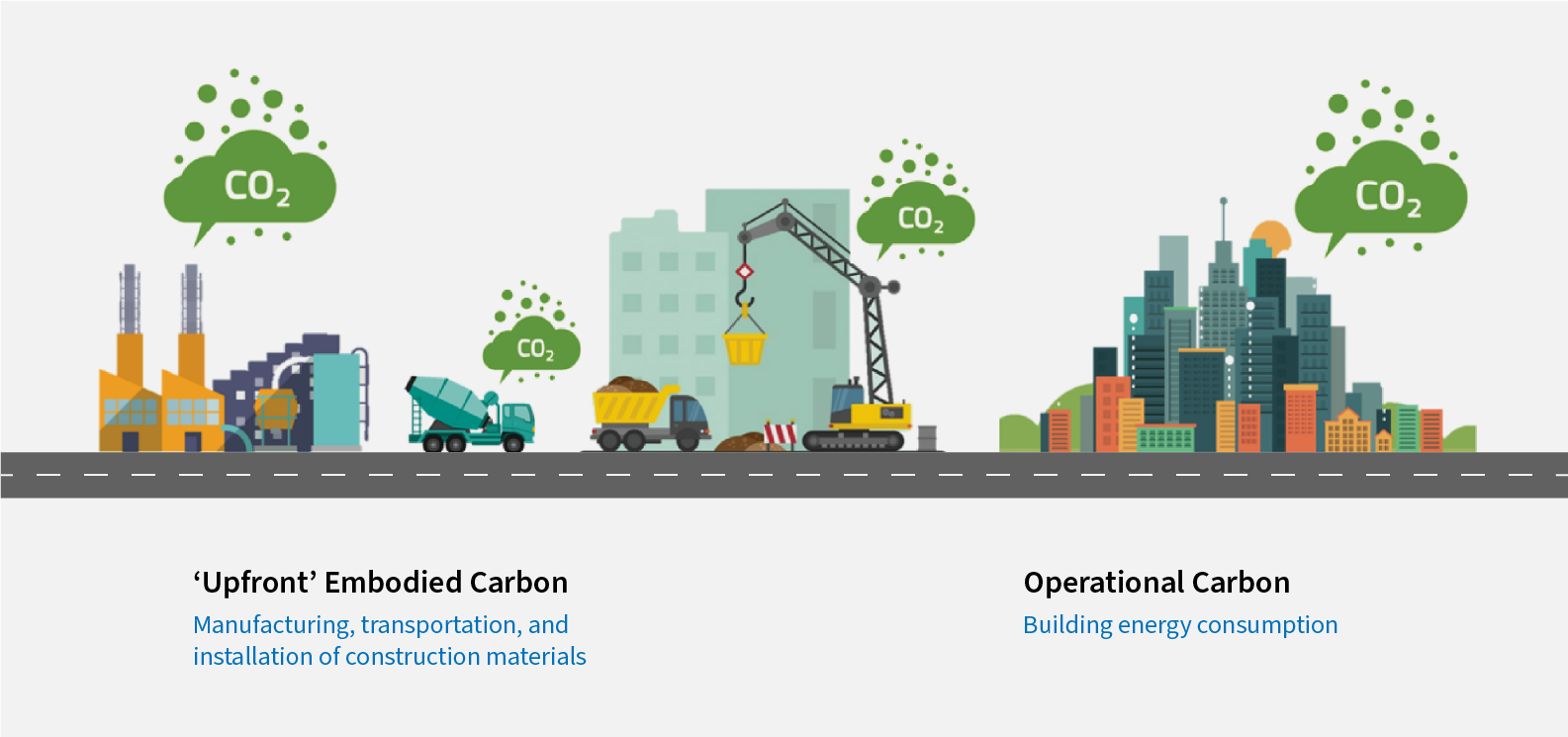The UK is firmly committed to achieving net-zero emissions by the year 2050. This ambitious goal necessitates significant efforts to minimize greenhouse gas emissions and offset any remaining emissions through carbon mitigation and absorption measures.
As a facilities manager or owner, it’s crucial to recognize the direct impact of this framework on your operations. Staying abreast of available options and solutions is essential for maximizing facility performance while simultaneously reducing emissions.
In our previous article, we explored some of the benefits of Smart Buildings. Today, we delve into the current state of the country’s net-zero efforts, the path ahead, and strategies that organisations can employ to reach this pivotal goal through their building infrastructure.
Let’s delve into it!
The Paris Agreement and the Imperative of Energy Transition
Let’s start with the basics. What exactly is the Paris Agreement? It stands as an internationally binding treaty on climate change, adopted by 196 Parties during COP21 in Paris on December 12, 2015. Coming into force on November 4, 2016, it has superseded the Kyoto Protocol to become the principal global framework for tackling climate change.
As you’re likely aware, the primary driver of climate change is the greenhouse effect. While many greenhouse gases occur naturally, human activities have significantly raised the concentration of some, particularly carbon dioxide (CO₂), in the atmosphere. The aim of energy transition is to revamp our energy systems by championing renewable sources, embracing the circular economy, and implementing other strategies to reduce emissions.
The Paris Agreement and the Kyoto Protocol
One of the most notable differences between the two lies in their approach to assigning responsibilities.
Under the Kyoto Protocol, only developed countries were required to reduce their emissions by an average of 5% annually between 2008 and 2012, compared to emission levels from 1990, which served as the baseline.
The Paris Agreement not only calls for efforts from developed countries but also aims primarily to limit global warming to below 2 degrees Celsius above pre-industrial levels, with efforts to limit it to 1.5 degrees Celsius.
To achieve this goal, it is crucial to reduce emissions by approximately 45% by 2030 and achieve emission neutrality or net-zero by 2050. The following graph illustrates the annual global temperature variation between 1880 and 2023 (in degrees Celsius).
Source: Annual anomalies in global land and ocean surface temperature from 1880 to 2023, based on temperature departure – Statista.
Mitigation Actions for Global Warming in the UK
To avert a climate emergency and achieve its 2050 target, the UK government has pledged to pursue a series of ambitious initiatives. For instance, it aims to attain entirely “clean” electricity by 2035 through the rapid expansion of wind, solar, and nuclear power. Additionally, it intends to capture and store between 20 and 30 million tonnes of CO2 annually by 2030, alongside targeting the installation of 600,000 electric heat pumps per year by 2028. The UK has already made considerable strides in reducing its greenhouse gas emissions, with a nearly 50% decrease since 1990.
Despite its relatively strong past performance, in June 2023, the Climate Change Committee (CCC), the government’s independent advisers, issued a stark caution about the “worryingly slow” progress.
Looking ahead, it’s evident that the UK’s climate goals require additional actions and a strong commitment from the public administration, the private sector, and society as a whole.
This commitment entails scaling up renewable energy capacity to reach 100% by 2050. This ambition goes beyond merely expanding capacity; it’s about fundamentally reshaping how we generate, distribute, and consume energy, leading to a decisive transition toward decarbonization and energy conservation. At the same time, it’s crucial for organisations to ensure compliance with energy efficiency regulations, standards, and certifications.
Buildings and Greenhouse Gas Emissions
In Europe, roughly 75% of buildings are classified as energy inefficient. Additionally, these structures account for 37% of global carbon emissions. Conversely, about 40% of the energy produced across Europe is directed towards fulfilling the energy demands of residential, commercial, and institutional buildings.
Source: Climate, Carbon and the Built Environment – Carbon Leadership Forum
These statistics are indeed alarming. However, they also highlight the immense potential that buildings hold in mitigating climate change and playing a significant role in attaining the objectives outlined in the Paris Agreement.
According to the International Energy Agency (IEA), direct CO2 emissions from buildings (stemming from sources owned or controlled by the organisation) must be reduced by 50% by 2030, while indirect emissions (arising from the organisation’s operations, yet originating from a source not directly owned by the organisation) should see a 60% reduction. This necessitates an annual decrease in emissions of 6% until 2030, ultimately leading to emissions neutrality within the sector by 2050.
You might be wondering how buildings can meet these ambitious targets. To address this question, we need to consider two key concepts:
- Operational carbon
- Embodied carbon.
Let’s delve into these concepts below.
Operational Carbon in Buildings
Operational carbon encompasses emissions produced throughout a building’s entire lifespan while it is in use. These emissions arise from energy consumption associated with heating, cooling, lighting systems, and other operational functions.
Roughly 28% of building emissions are attributed to operational carbon. To mitigate operational carbon, strategies must prioritize optimizing energy usage within the building and implementing effective maintenance practices. An effective approach to attain this objective involves implementing an Energy Management System capable of monitoring and optimizing the infrastructure’s energy consumption. This system can identify unnecessary energy usage and anomalies, allowing for timely corrections.
Embodied Carbon in Buildings
Embodied carbon refers to greenhouse gas emissions associated with the production and transportation of materials necessary for constructing the building, as well as processes throughout the building’s entire lifecycle. This includes production, construction, refurbishment, use, and end-of-life phases. According to the United Nations’ 2022 Global Status Report, 9% of global building emissions originate from embodied carbon.
The extraction and manufacturing of construction materials constitute the majority of embodied carbon, accounting for between 50% and 80% of the total. This underscores the importance of selecting construction materials with minimized impacts, sourced locally, and built to last.
Source: Climate, Carbon and the Built Environment – Carbon Leadership Forum
How Can I Achieve Net-Zero in My Building?
For new buildings yet to be constructed, addressing these two factors is relatively straightforward.
Firstly, as we’ve already discussed, to mitigate embodied carbon, your company must carefully consider the materials and construction techniques used. Then, to minimize operational carbon, you should focus on the building’s design, including aspects such as orientation, shape, and material selection, among others. This way, the building will be designed to maximize the utilization of natural resources, such as sunlight, ventilation, and outdoor temperature. Additionally, highly efficient energy monitoring equipment and systems, such as an EMS, should be incorporated.
However, what if my building is already constructed? Can’t I do anything to move my organisation’s building closer to net-zero? The answer is that… you still have time to act! You can retrofit your conventional building into a smart building. This way, you’ll significantly reduce operational carbon emissions.
Smart Buildings and Decarbonization
It is projected that 66% of current buildings will still be standing by the year 2050. This underscores the importance of considering existing buildings in achieving the goals set forth by the Paris Agreement. Decarbonization efforts extend beyond merely constructing new smart buildings; they also encompass the modernization and enhancement of energy efficiency in existing structures.
Transforming your organisation’s building into a smart facility emerges as a beacon in this context. By leveraging advanced technologies and IoT, such buildings optimize energy usage and significantly reduce emissions. Through these technologies, a smart building can analyse unnecessary consumption and identify anomalies, resulting in potential energy savings of up to 30%. By improving energy efficiency within buildings, we not only contribute to the objective of achieving net-zero emissions but also pave the way for a sustainable and energy-efficient future.
Enhancing energy efficiency in existing structures is a critical step toward reaching net-zero emissions targets and facilitating the transition to cleaner energy sources. This approach is not only environmentally imperative but also economically advantageous, as it leads to substantial energy and cost savings for organisations.
What Benefits Do Organisations Gain from a Smart Building?
We’ve previously discussed the advantages of smart buildings. Today, we’ll delve into three key benefits:
- Energy Efficiency and Operational Cost Reduction: Smart buildings employ energy management systems to optimize electricity usage, thereby slashing operational costs tied to energy consumption. These systems automatically regulate lighting, heating, ventilation, and air conditioning (HVAC), while intelligently managing renewable energy sources like solar panels.
- Sustainability and Regulatory Compliance: Integrating sustainable practices and technologies into smart buildings reduces their environmental footprint and ensures adherence to regulations governing energy efficiency and resource conservation. This can lead to certifications such as LEED (Leadership in Energy and Environmental Design) and participation in other sustainable construction programs.
- Enhanced User Experience and Worker Satisfaction: Smart building systems enhance occupants’ experiences by providing a more comfortable environment tailored to their needs. Studies have shown that smart buildings promote physical and mental well-being by reducing noise and pollution, among other benefits.
How Can I Modernize and Transform My Building into a Smart Facility?
Energy efficiency, sustainability, and the pursuit of net-zero are critical priorities for building managers. According to a survey conducted by Forrester Consulting, 42% of participants identified the adoption of digital technologies to optimize energy consumption as one of the most impactful areas for sustainability investment.
Technologies such as IoT sensors, artificial intelligence (AI), and machine learning (ML) can convert a traditional building into a smart one. For instance, sensors continuously monitor room activity and automatically identify and shut down unnecessary systems if no activity is detected, thus minimizing energy waste.
By implementing Building Automation Systems (BAS) and an Energy Management System (EMS) like Spacewell Energy, your organisation can effectively manage energy usage. As a facility manager, you can make data-driven decisions based on real-time data collected by the EMS. This approach leads to both short-term benefits, such as reduced energy consumption, and long-term advantages, including well-defined, data-driven strategies that result in significant cost savings over time.






